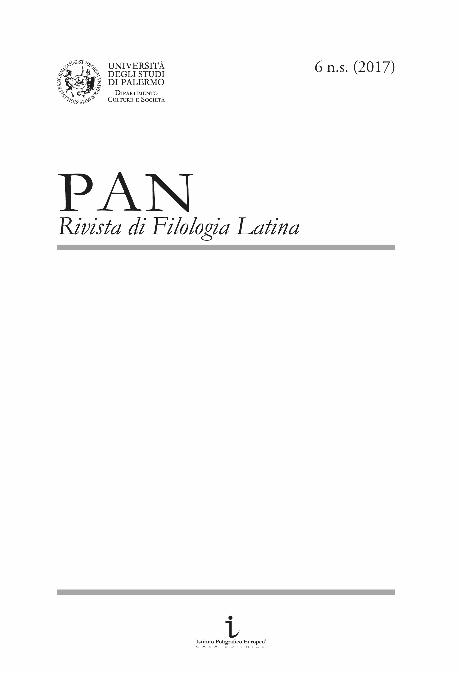Artículo
The battlefield scene in Book 7 of lucan´s Bellum Ciuile clearly shows a redefinition of the traditional topos of the day after the battle. Although bloody scenes appeared in Latin literature since Early roman tragedy, Lucan´s Neronian epic provided a new interpretation of that literary convention by focusing on its gruesome aspects. The underlining of hideous details is a powerful expression of civil struggle´s anomaly and excess. On the one hand, internal strife relates to a subversion of usual warfare rules by facing roman to roman in the battleground; on the other hand, it also shows the excess of war, as the poet claims at the very beginning of his text. Within such a reading horizon, the uncommon performance of both parties connects Lucan´s narrative with the roman idea of monstrosity. The description of bloody scenes in Book 7 is even more complex because they involve Caesar himself. Moreover, as a cruel spectator of that landscape, Caesar strengthens the problematic status of the winning side in a brotherly killing, and the ambivalence of power in Lucan´s world. show that the intersection of historiographic, epic and tragic codes and the manipulation of some literary and cultural motifs function as a pivotal feature of Lucan´s poetics of roman history. Nel libro 7 del Bellum Ciuile lucano riscrive il topos tradizionale del giorno dopo la battaglia. sebbene la rappresentazione di scene di sangue fosse una convenzione letteraria riscontrabile nella letteratura latina sin dal teatro arcaico, l’epica lucanea ne fornisce un nuovo orientamento. il macabro diventa in lucano uno schema descrittivo essenziale per la narrazione dell’anomalia e degli eccessi della guerra civile, risultanti entrambi dalla contrapposizione di cittadini romani sul campo di battaglia. in quest’orizzonte di senso, la condotta inattesa ed insolita dei due eserciti collega la narrativa lucanea con l’idea romana di mostruosità. la descrizione del massacro dopo lo scontro decisivo di farsàlo è particolarmente ricca di significato perché coinvolge lo stesso cesare. crudele spettatore di quel paesaggio, cesare accentua lo status problematico dei vincitori in una lotta intestina e l’equivoco del potere nell’intero poema. Mostreremo che l’intersezione fra epica, storiografia e tragedia e la manipolazione di alcuni topoi letterari e culturali in quell’episodio costituiscono un aspetto centrale della poetica lucanea della storia di Roma.
Gaze, Monstrosity, and the Poetics of History in Lucan
Fecha de publicación:
11/2017
Editorial:
Università degli Studi di Palermo. Dipartamento Culture e Societá
Revista:
Pan
ISSN:
0390-3141
Idioma:
Inglés
Tipo de recurso:
Artículo publicado
Clasificación temática:
Resumen
Palabras clave:
Lucan
,
Battlefield
,
Poetics
,
History
Archivos asociados
Licencia
Identificadores
Colecciones
Articulos(SEDE CENTRAL)
Articulos de SEDE CENTRAL
Articulos de SEDE CENTRAL
Citación
Tola, Eleonora; Gaze, Monstrosity, and the Poetics of History in Lucan; Università degli Studi di Palermo. Dipartamento Culture e Societá; Pan; 6; 11-2017; 115-123
Compartir
Altmétricas




